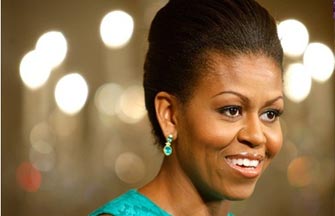|
|
The Smithsonian National Postal Museum in Washington DC is telling the story of China-US relations through its huge collection of Chinese and US postage stamps and mail.
|
 |
| US first lady visits China |
Organized into three themes - commerce, culture and community - the exhibit includes stamps and mail from as early as 1849, with a letter from Massachusetts to Guangzhou.
At that time it took three months or more for a letter to reach an American opium trader in Guangzhou. The mail would take the Atlantic route, which meant it would travel via England, Egypt and Hong Kong before eventually reaching the Chinese mainland. The delivery time was cut to one month when the Pacific route was opened in 1867.
Pan Am's round-trip flights from the US to Asia in 1937 again dramatically shortened the mail delivery time. From Hong Kong, the China National Aviation Corp provided service to 21 Chinese cities.
Some stamps reflect the Japanese occupation of part of China from 1937 to 1945, but it also shows how China, the US and Britain were once allies, with flags of the three nations displayed on the same stamp.
The exhibit also tells the story of how the Qing Dynasty (1644-1911) court hired two American engravers to set up a Chinese bureau of engraving and printing so that China could start to produce its own stamps and currency.
Though China and the US had no diplomatic ties for about two decades after 1949, the show also displays some of the rarest stamps from China, such as "the entire nation is red" stamp, which was issued in 1968 but withdrawn immediately on its first day because there was an inaccuracy on the Chinese map on the stamp.
Even though China and the US were enemies during the Cold War, some Americans, such as physicist Albert Einstein, and journalists Edgar Snow and Agnes Smedley, who reported from China in the 1930s and '40s, were featured on Chinese stamps.
That unhappy period of China-US relations ended when then President Richard Nixon visited China in early 1972, one year after a US table tennis team toured the country, giving rise to the term "ping-pong diplomacy".
